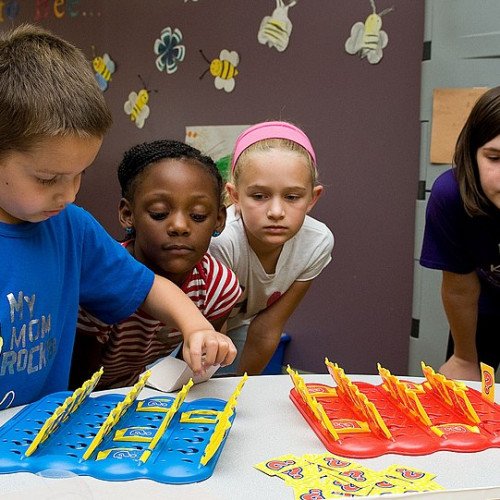BUL VS GUESS WHO

BUL
Bul (also called Buul, Boolik or Puluc) is a running-fight board game originating in Mesoamerica, and is known particularly among several of the Maya peoples of Belize and the Guatemalan highlands. It is uncertain whether this game dates back to the pre-Columbian Maya civilization, or whether it developed in the post-colonial era after the arrival of the Spanish conquistadores. Stewart Culin described the game in the 24th Annual Report of the Bureau of American Ethnology: Games of North American Indians published in 1907. R. C. Bell referred to the game in Board and Table Games from Many Civilizations. Both of these descriptions were based on the eyewitness accounts of others. Lieve Verbeeck, a linguist studying Mayan language, witnessed the modern version of the game being played by Mopan and Kekchi Maya in Belize It is not known exactly when the game was developed or what the original rules were as very few records survived the invasion by the conquistadors between the 15th and 17th centuries. Stewart Culin organised the games in his anthology into those he thought had an influence from Europe in their creation. Bul is not listed among these, and in his opinion the game must have developed before Europeans arrived in Central America. There are a variety of ways to play the game, as Verbeeck's account shows. The game could be played by two people, or by two equal-sized teams. The overall objective is to capture and subsequently kill the playing pieces of the opposition, so the game is in essence a war game. The playing area is divided into equal spaces using rods placed parallel to each other. The two players have control of a base at either end of the play area. The players take an even number of stones or figurines (or any suitable playing piece) and place them in their respective bases.
Statistics for this Xoptio

GUESS WHO
Guess Who? is a two-player character guessing game created by Ora and Theo Coster, also known as Theora Design, that was first manufactured by Milton Bradley in 1979 and is now owned by Hasbro. It was first brought to the UK by Jack Barr Sr. in 1982. The classic edition is currently being produced by Winning Moves Games USA. Each player starts the game with a board that includes cartoon images of 24 people and their first names with all the images standing up. Each player selects a card of their choice from a separate pile of cards containing the same 24 images. The objective of the game is to be the first to determine which card one's opponent has selected. Players alternate asking various yes or no questions to eliminate candidates, such as: "Does your person wear a hat?" "Does your person wear glasses?" "Is your person a man?" The player will then eliminate candidates (based on the opponent's response) by flipping those images down until only one is left. Well-crafted questions allow players to eliminate one or more possible cards. Special editions which have different faces have been released, including Star Wars, Marvel Comics and Disney. There are smaller, "travel" editions which have only 20 different faces. In 2008 and 2010, extra and mix and match games were released. A computer game based on the series was released in 1999 by Hasbro Interactive. In the United States, advertisements for the board game often showed the characters on the cards coming to life, and making witty comments to each other. This caused later editions of such ads to carry the spoken disclaimer line "game cards do not actually talk" in order to meet Federal Trade Commission advertising guidelines requiring full disclosure of toy features unable to be replicated with the actual product.